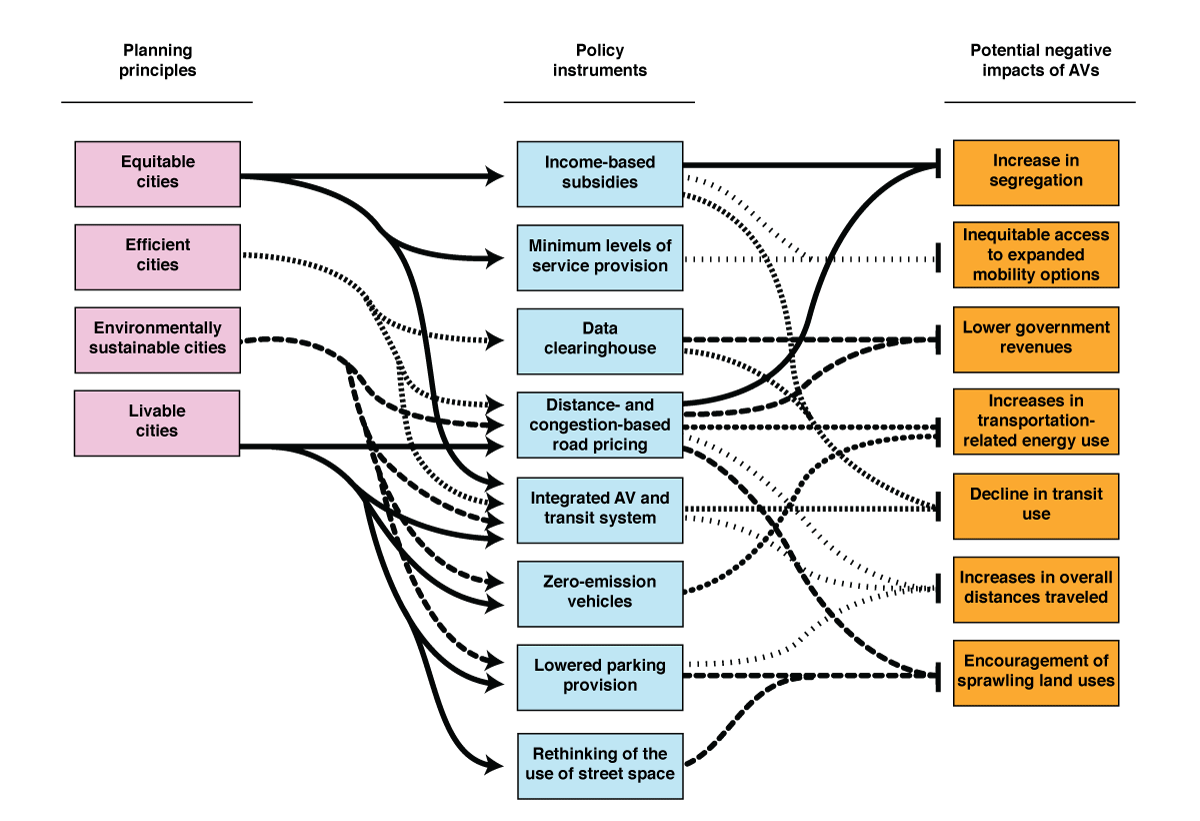| Title | An Urban Agenda for Autonomous Vehicles: Embedding Planning Principles into Technological Deployment |
| Publication Type | Conference Paper |
| Year of Publication | 2018 |
| Authors | Yonah Freemark, Jinhua Zhao |
| Conference Name | Transportation Research Board 97th Annual Meeting |
| Conference Location | Washington, D.C. |
| Keywords | Automated Mobility Policy Project, Autonomous Vehicles, Local Governments, Planning Principles, Policy Instruments |
| Abstract | The deployment of autonomous vehicles (AVs) has spawned a considerable literature on the role of national and state-level governments in regulating components of AV manufacturing, emissions, safety, licensing, and data sharing. These provide insight into how AVs can be integrated into the current transportation system. Yet the potential for local governments to shape their futures through AV policies is underexplored. This paper argues that it is both necessary and feasible for local government to adjust local mobility policies for AVs towards the goal of achieving key planning principles by disrupting the current transportation system. Local governments must leverage the ephemeral moment in advance of full-scale AV rollout to achieve the principles of equitable, environmentally sustainable, efficient, and livable cities. It is necessary to establish a new regulatory relationship with automobiles and design mobility policies to cultivate AV benefits, while responding to their potentially deleterious impacts. Local governments are capable of doing so through their already-existing regulatory mechanisms managing much of the transportation infrastructure, public transit, taxi, parking, land uses, and public data. Based on such local government power, we identify eight policy instruments that are feasible: centralized data collection and distribution; distance- and congestion-based road pricing; integration of AV and transit networks; income-based subsidies; minimum levels of service provision; zero-emission vehicles; lowered parking provision; and a rethinking of the use of street space. We explore how such instruments could be implemented in the context of existing regulatory mechanisms through the diverging lenses of indicative cases of Chicago and London. |
image:
